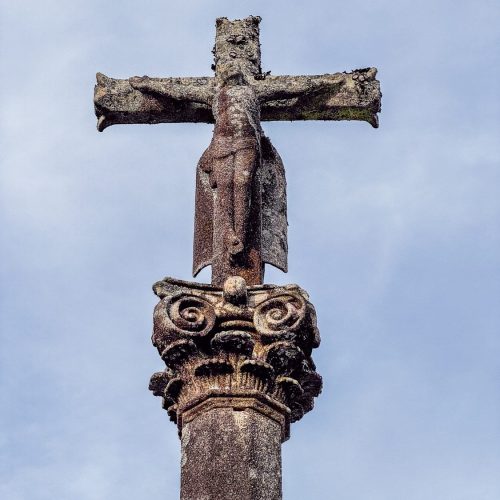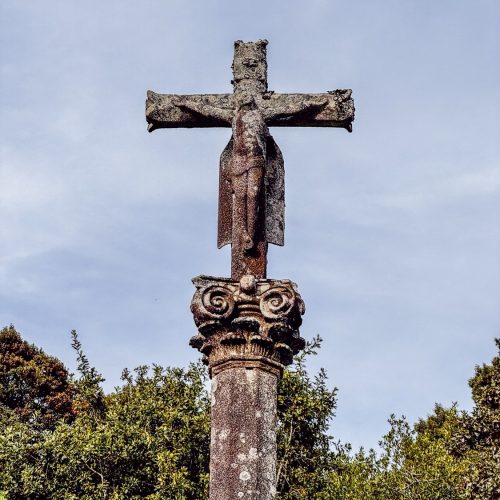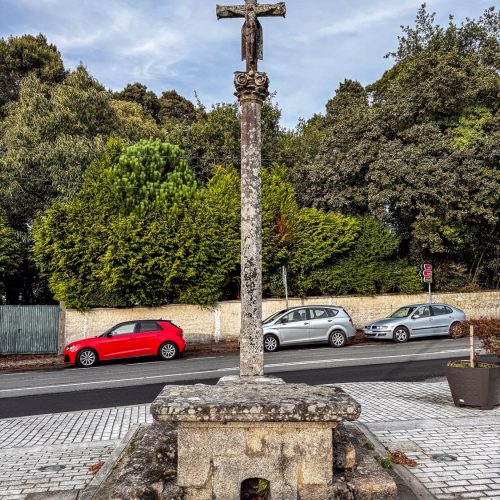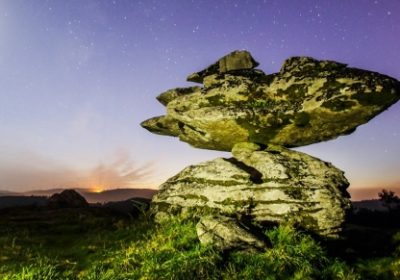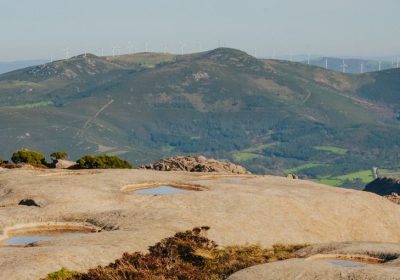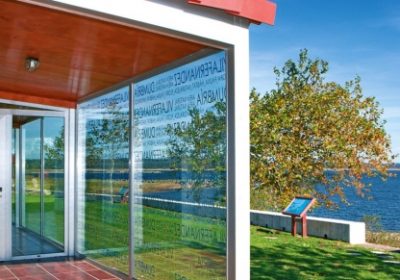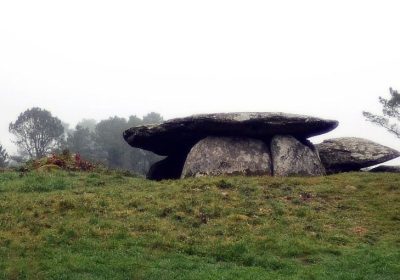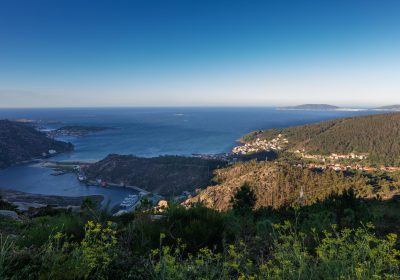In A Grixa (Dumbría, A Coruña), just off the Fisterra–Muxía Way, the Cruceiro da Grixa de Berdeogas (Galician stone wayside cross) invites a quiet pause. It stands on a square platform with a single step and a chamfered square pedestal, beside a stone table that hints at offerings and prayers from long ago. Weathered by the Costa da Morte winds, it keeps watch over pilgrims and locals alike.
From the base rises an octagonal shaft that starts in a square section, bearing a concise inscription: “A 1797.” Above sits an octagonal capital with a plain astragal, an abacus with curved sides and chamfered corners, and a restrained repertoire of volutes, faces and lobed-edge leaves—all small signatures of skilled stonemasonry and time.
The monument is crowned by an octagonal cross with floriated finials and a central boss. On the front, Christ crucified with three nails shows open hands, the head inclined to the right, no crown of thorns, and the INRI cartouche above; the loincloth is knotted to the right. On the back, the Virgin in prayer stands with hands joined upon a plinth. The entire cross is carved in granite, the native stone of the landscape.
For travellers on the Camino to Fisterra and Muxía, this is an open-air wayside sanctuary—a place to breathe, read centuries written in stone, and carry on with the calm bestowed by the Cruceiro da Grixa de Berdeogas.


